While the people were starving, he declared: “I would like to propose to the people of the whole country, and I would like to do it first: Every 10 days, fast one meal, every month, fast three meals. Take that rice (one bowl per meal) to save the poor people.”
Our country was in a precarious situation after gaining independence. To resolve the situation, our Party and State relied on the people and aroused the strength of the great national unity bloc. In particular, our Party issued the Directive on Resistance and National Construction (November 25, 1945) to further strengthen the great national unity bloc to fight against hunger, illiteracy and foreign invaders.
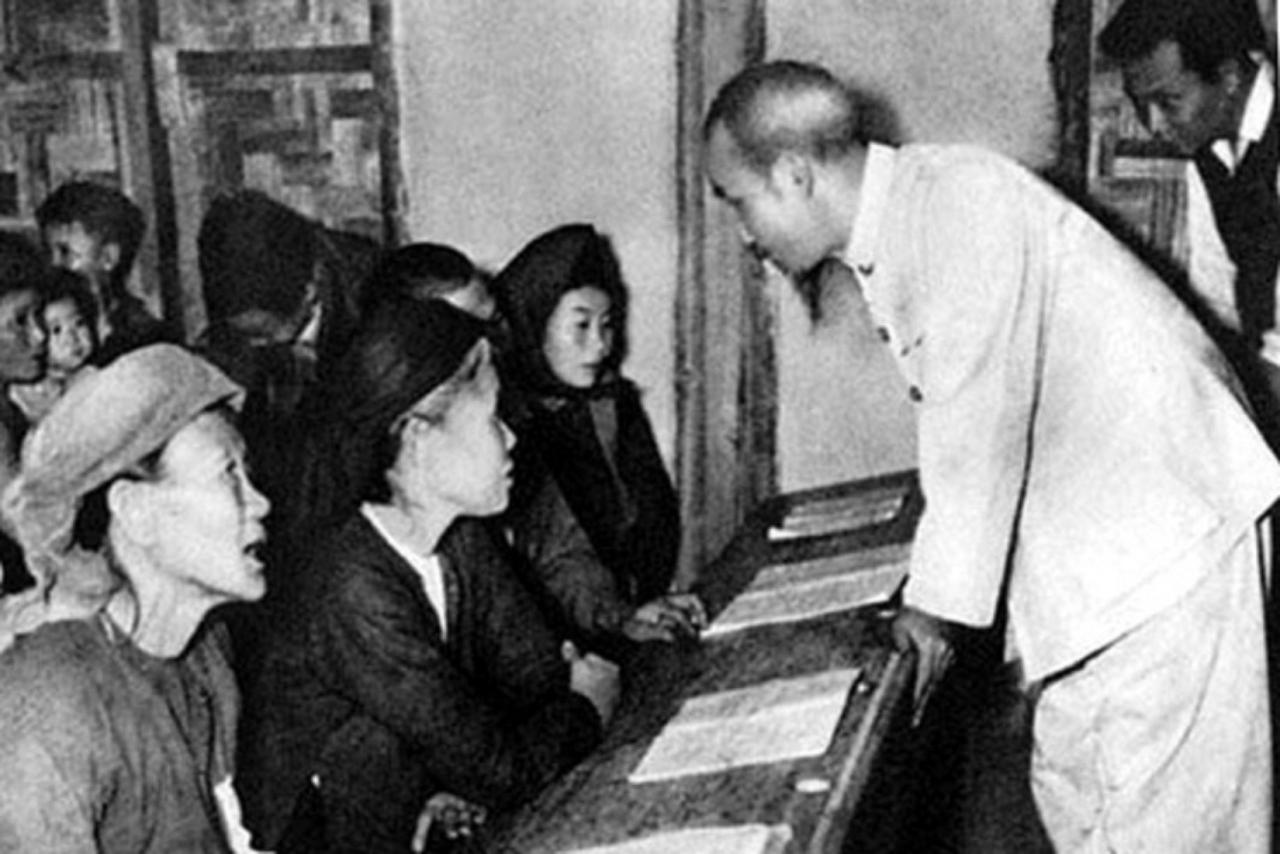
President Ho Chi Minh visited a cultural supplementary class for working women in Luong Yen neighborhood, Hanoi (March 27, 1956). Photo: Archive
In the work “Mass Mobilization” written on October 15, 1949, published in the Truth Newspaper No. 120, President Ho Chi Minh concluded: “Mass mobilization is mobilizing all the forces of each citizen, not leaving out any citizen, contributing to the entire people's force, to carry out the work that should be done, the work assigned by the Government and the Unions”. He also pointed out: “If mass mobilization is skillful, everything will be successful”.
“Golden Week” contributes to the Independence Fund
On September 4, 1945, Minister of the Interior Vo Nguyen Giap, on behalf of the Provisional Government of the Democratic Republic of Vietnam, signed Decree No. 04 establishing the “Independence Fund”. The Decree stated: “Establish in Hanoi and provinces throughout the country a fund to collect money and objects that the people are willing to donate to the Government to support the independence of the Nation” and “All fundraising and organization will be under the control of the Ministry of Finance ”.
Within the framework of the “Independence Fund”, the Government proposed a program to organize a “Golden Week” from September 17, 1945 to September 24, 1945, calling for the support of the people, especially the business class in society. President Ho Chi Minh sent a letter to the people nationwide to clarify this matter. He wrote: “To consolidate that freedom and independence, we need the sacrifices and struggles of the people nationwide; but we also need the donations of the people, especially the wealthy. That is the meaning of the “Golden Week” (Cuu Quoc Newspaper, No. 45, September 17, 1945).
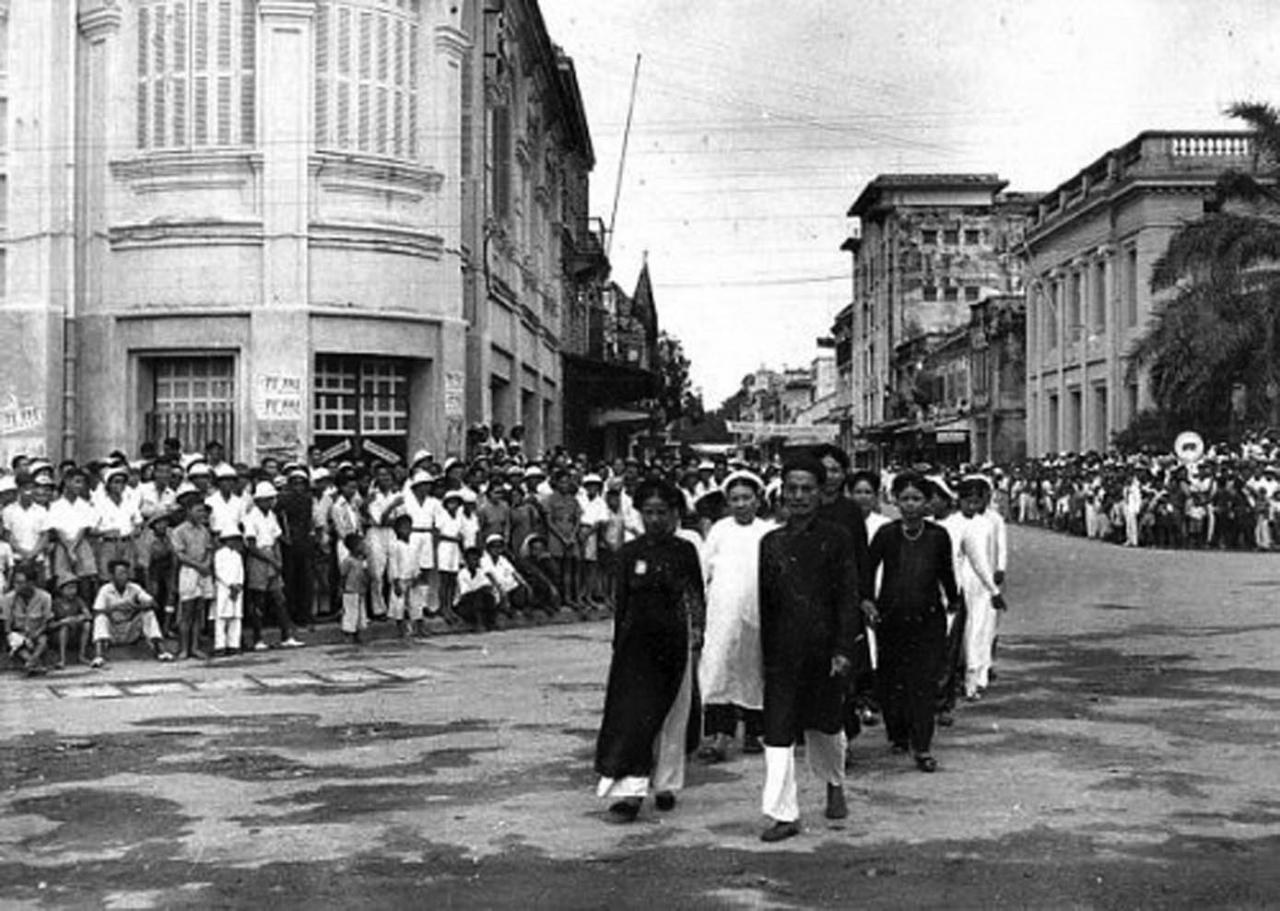
People from all walks of life in the capital enthusiastically went to support the "Golden Week". Photo: Archive
During the “Golden Week”, people from all walks of life across the country donated 370kg of gold and 20 million Indochinese piastres. According to many researchers, the price of gold at that time was 400 dong/tael, so 20 million dong was equivalent to 50,000 taels (about 1,923 kg). Thus, the “Golden Week” collected a total of 2,293 kg or 59,618 taels of gold.
Fight hunger
On September 3, 1945, at the Northern Government Office, President Ho Chi Minh chaired the first meeting of the Government Council. He considered the first of the six “most urgent problems” to be “the people are hungry”. He proposed that the Government launch a campaign to increase production.
He also suggested: “While waiting for corn, potatoes and other foodstuffs, which will take three or four months, I suggest holding a fundraiser. Every ten days, all of our people will fast for one meal. The rice we save will be collected and distributed to the poor.”
In mid-September 1945, our Government organized a ceremony to launch the famine relief movement. This ceremony was held at the Opera House (Hanoi). The patriotic nationalist bourgeois Ngo Tu Ha, chairman of the ceremony, read a call for all people to share their food and clothes, each family to spare a little rice to help the hungry.
Mr. Ngo Tu Ha himself pulled the cart leading the group of people participating in the famine relief movement through Trang Tien Street (Hanoi). Every house had people waiting on the sidewalk, some with rice, some with corn, some with money. Before even completing one round, the cart was full of rice. Arriving at the Opera House to meet President Ho Chi Minh, Mr. Ngo Tu Ha reported to him that the cart was filled with a mixture of all kinds of rice: red rice, white rice, sticky rice, corn...
President Ho Chi Minh at that time pointed to the rice cart and said: “This is the rice of great unity. Our country has many kinds of delicious rice, but right now this is the best rice.”
In a letter to the people of the whole country published in the National Salvation Newspaper on September 28, 1945, President Ho Chi Minh wrote: “When we lift a bowl of rice to eat, thinking of the hungry and miserable, we cannot help but be moved. So I would like to propose to the people of the whole country, and I would like to implement it first: Every 10 days, fast for one meal, every month, fast for three meals. Use that rice (one bowl per meal) to save the poor.”
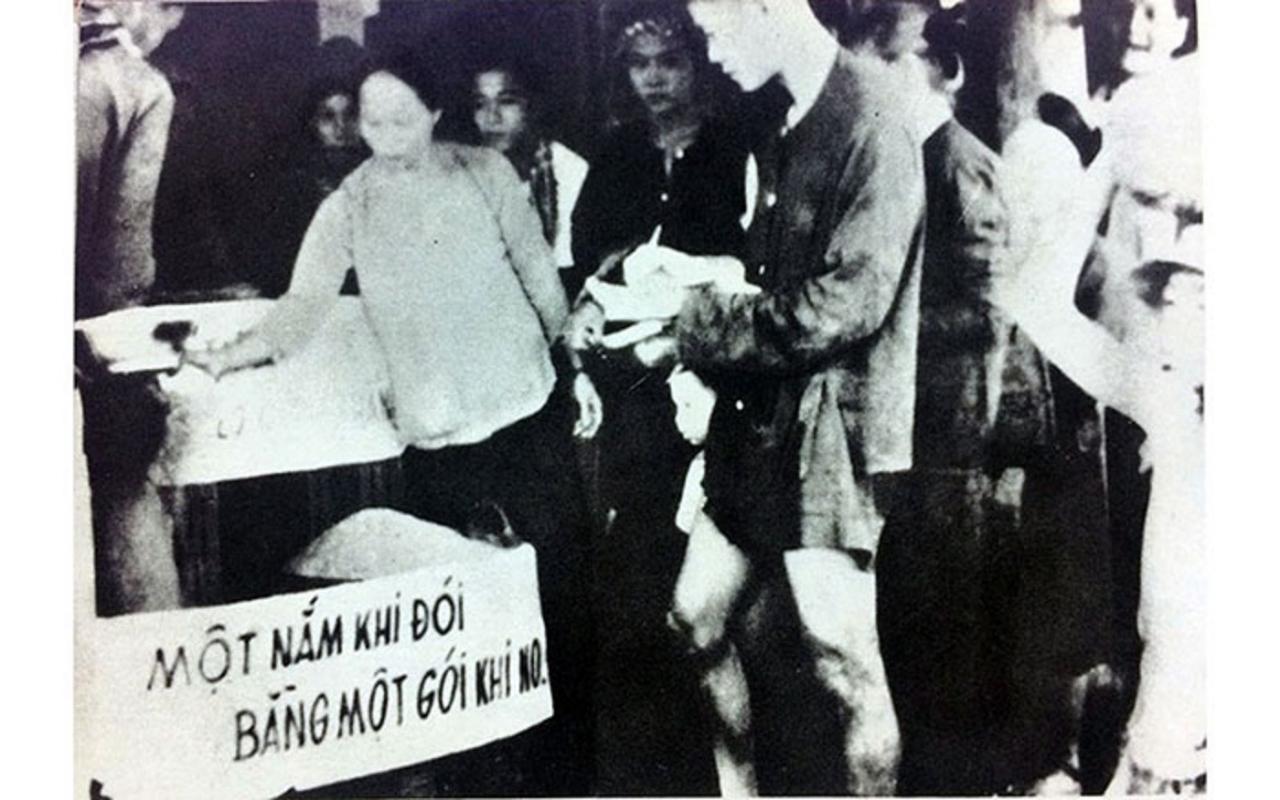
Following President Ho Chi Minh's call, people everywhere contributed rice to fight famine. Photo: Archive
Responding to President Ho Chi Minh's call, across the country, our people set up "Rice Jars to Save the Hunger" and organized "Day of Unity". Since then, tens of thousands of tons of rice have been contributed by the people of the whole country to share with our compatriots who are suffering from the disaster of famine. Next, the Government of the Democratic Republic of Vietnam also immediately applied a number of specific measures such as severely punishing those who speculate and hoard rice; prohibiting the use of rice for non-essential purposes such as making wine and cakes; prohibiting the export of rice, corn, and beans; appointing a committee to take charge of transporting rice from the South to the North...
On November 2, 1945, Minister of Social Relief Nguyen Van To decided to establish the Famine Relief Association. The Famine Relief Association was organized down to the villages. On November 28, 1945, President Ho Chi Minh issued a decree establishing the Supreme Committee for Relief and Relief. In addition to the Ministry of Relief, a number of other ministries also had the task of relief and relief.
In October and November 1945, the Government issued a decree reducing land tax by 20% and exempting it completely in flooded areas. The Ministry of National Economy issued a circular regulating the declaration of ownerless land, uncultivated public and private land, and temporary allocation to farmers who had no land or lacked land.
In addition, on November 19, 1945, the Government established a Central Committee in charge of production. Many policies were implemented synchronously at this time, such as publishing newspapers to guide people in production, lending people rice and money for production, sending veterinary staff to the countryside to take care of livestock and poultry, spending the budget to repair broken dikes, strengthening the dike system, and building new dikes.
In the article “To Vietnamese farmers” published in the newspaper Tac Dat (December 1945), President Ho Chi Minh emphasized the need to increase production: “If food is sufficient, the army will be strong. If we cultivate a lot, we will not be hungry. If we practice the saying “every inch of land is worth an inch of gold”, we will definitely win in these two tasks. Increase production!
Increase production now! Increase production again! That is our slogan today. That is our practical way to maintain our freedom and independence.”
By early 1946, the dike work was completed. At the same time as building the dikes, the authorities and people of all localities made great efforts to improve vacant public land such as yards, sidewalks, and dikes for growing crops, especially short-term crops.
Thanks to that, in just five months from November 1945 to May 1946, food production, mainly crops, reached the equivalent of 506,000 tons of rice, enough to make up for the food shortage of the 1945 crop. The famine was basically resolved. During the celebration of the first anniversary of independence, National Day, which took place on September 2, 1946, Minister of the Interior Vo Nguyen Giap declared: "The revolution has defeated famine, which is truly a feat of democracy."
Fight against ignorance
On September 3, 1945, in the first meeting of the Provisional Revolutionary Government, President Ho Chi Minh pointed out that more than ninety percent of our people were illiterate and therefore he proposed launching a campaign to combat illiteracy. After that, the Popular Education Department was established, with a deadline of six months for every village and town to have “at least one popular class” and compulsory learning of the national language nationwide.
Then, on October 4, 1945, President Ho Chi Minh issued an appeal to all compatriots to fight against illiteracy. He wrote: “To maintain independence, to make the people strong and the country rich, all Vietnamese people must understand their rights and duties, must have new knowledge to be able to participate in the construction of the country, and first of all must know how to read and write in the national language”.
With the Popular Education Movement, over 2.5 million people have learned to read and write. This is the basis for our Party and Government to continue implementing cultural supplementary classes to eradicate illiteracy. As President Ho Chi Minh pointed out: Socialism is to make all people "go to school".
Nguyen Van Toan
Vietnamnet.vn


![[Video] More than 100 universities announce tuition fees for the 2025–2026 academic year](https://vphoto.vietnam.vn/thumb/1200x675/vietnam/resource/IMAGE/2025/7/18/7eacdc721552429494cf919b3a65b42e)





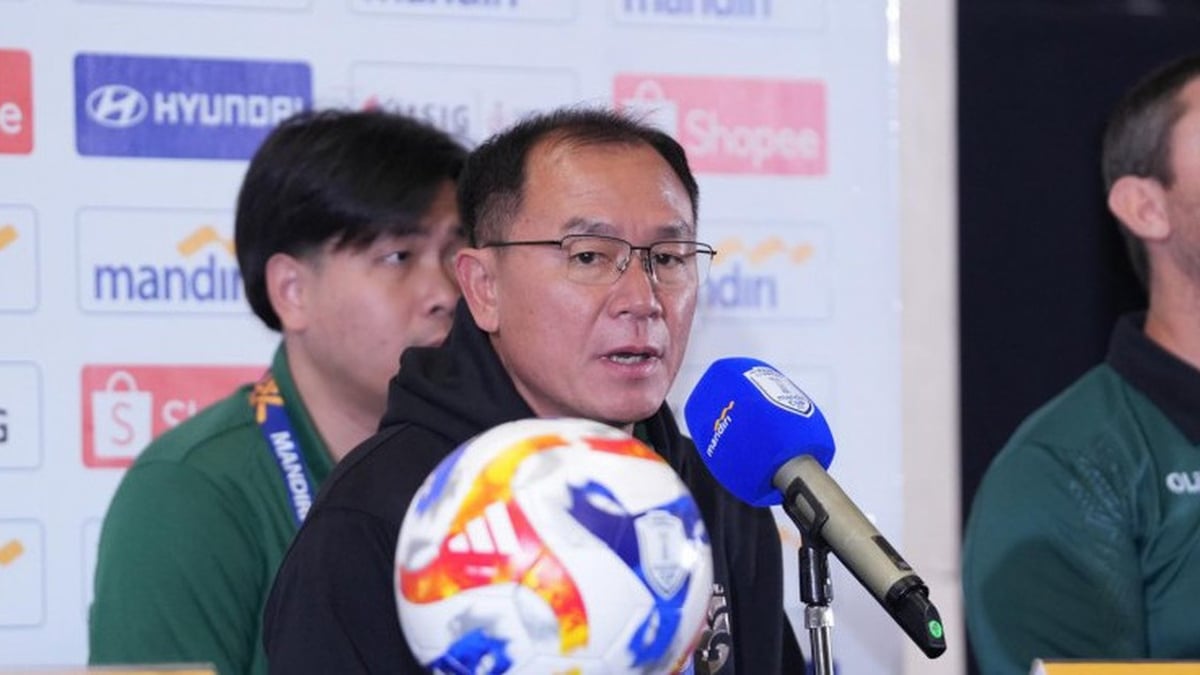
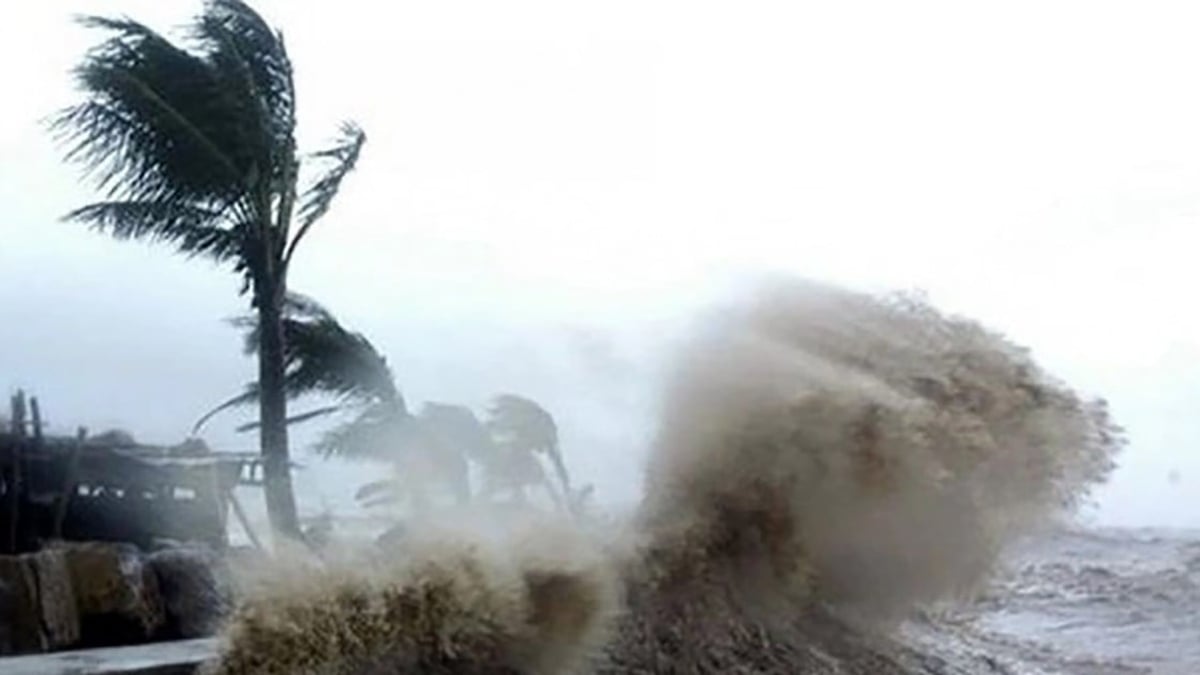
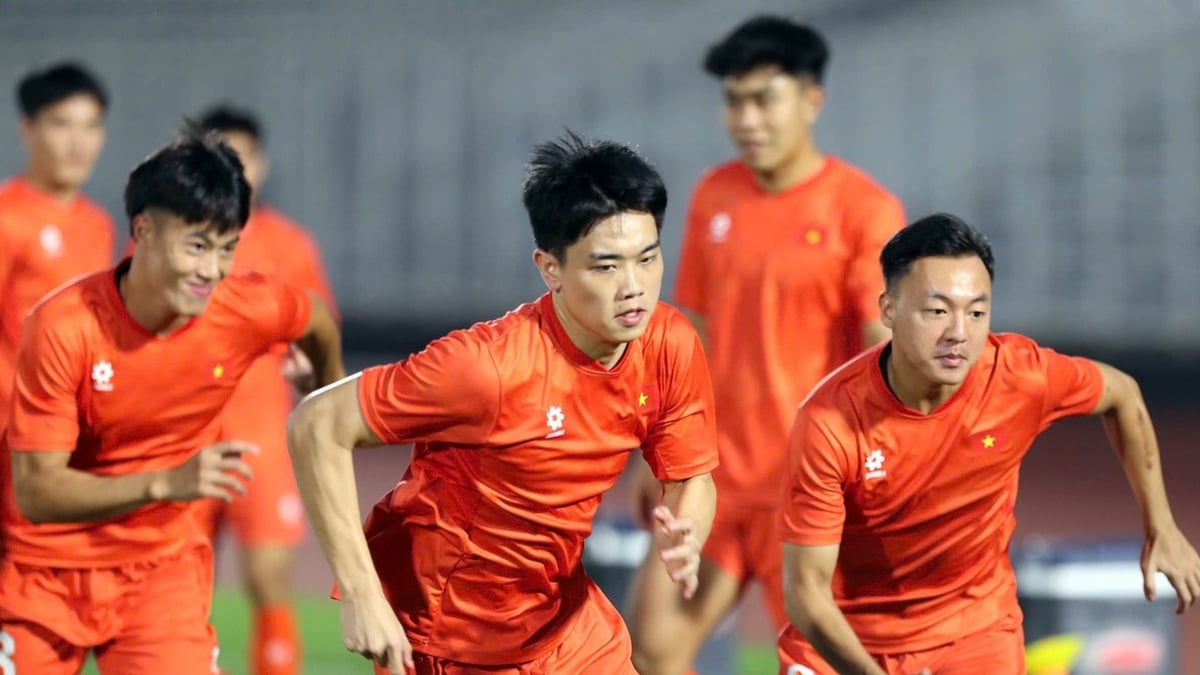
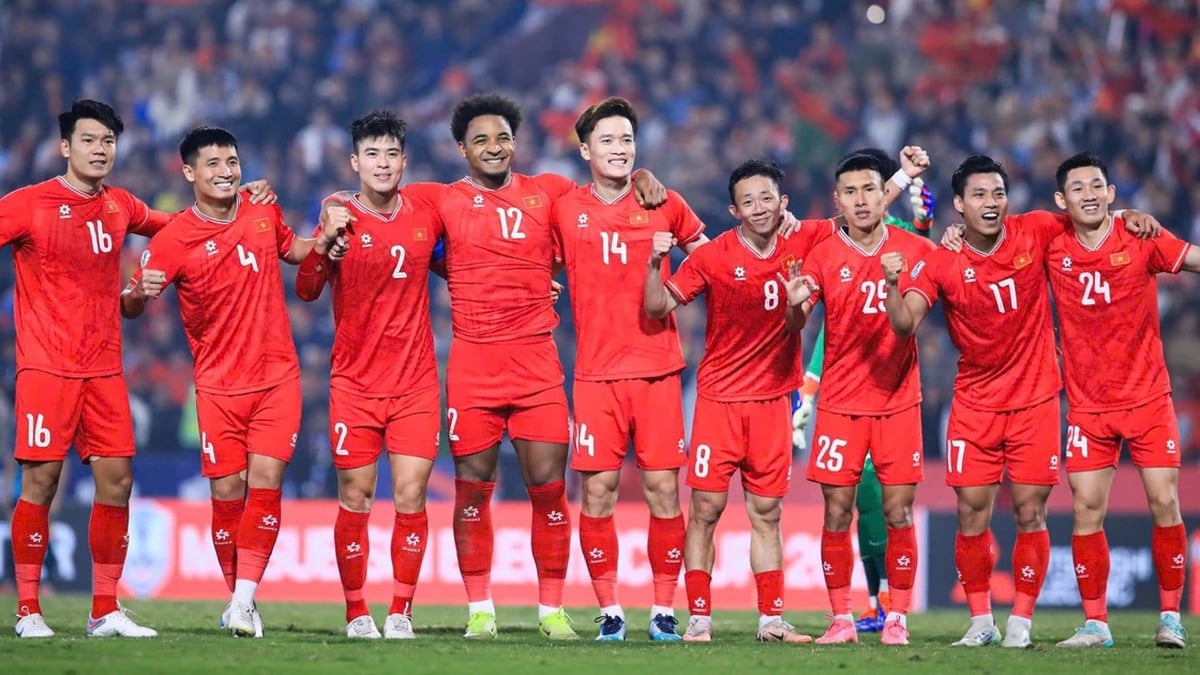

















































































![[Infographic] In 2025, 47 products will achieve national OCOP](https://vphoto.vietnam.vn/thumb/402x226/vietnam/resource/IMAGE/2025/7/16/5d672398b0744db3ab920e05db8e5b7d)





Comment (0)